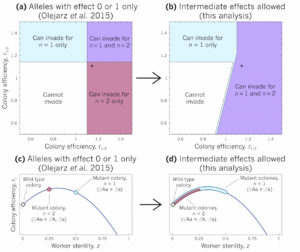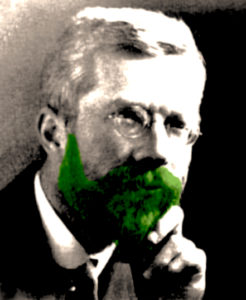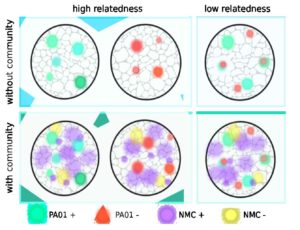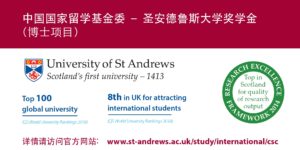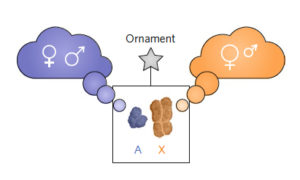González-Forero M & Gardner A (2018) Inference of ecological and social drivers of human brain-size evolution. Nature 557, 554-557.
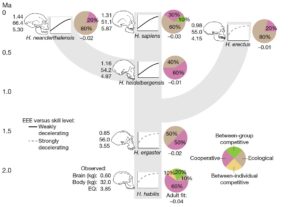 The human brain is unusually large. It has tripled in size from Australopithecines to modern humans and has become almost six times larger than expected for a placental mammal of human size. Brains incur high metabolic costs and accordingly a long-standing question is why the large human brain has evolved. The leading hypotheses propose benefits of improved cognition for overcoming ecological, social or cultural challenges. However, these hypotheses are typically assessed using correlative analyses, and establishing causes for brain-size evolution remains difficult. Here we introduce a metabolic approach that enables causal assessment of social hypotheses for brain-size evolution. Our approach yields quantitative predictions for brain and body size from formalized social hypotheses given empirical estimates of the metabolic costs of the brain. Our model predicts the evolution of adult Homo sapiens-sized brains and bodies when individuals face a combination of 60% ecological, 30% cooperative and 10% between-group competitive challenges, and suggests that between-individual competition has been unimportant for driving human brain-size evolution. Moreover, our model indicates that brain expansion in Homo was driven by ecological rather than social challenges, and was perhaps strongly promoted by culture. Our metabolic approach thus enables causal assessments that refine, refute and unify hypotheses of brain-size evolution.
The human brain is unusually large. It has tripled in size from Australopithecines to modern humans and has become almost six times larger than expected for a placental mammal of human size. Brains incur high metabolic costs and accordingly a long-standing question is why the large human brain has evolved. The leading hypotheses propose benefits of improved cognition for overcoming ecological, social or cultural challenges. However, these hypotheses are typically assessed using correlative analyses, and establishing causes for brain-size evolution remains difficult. Here we introduce a metabolic approach that enables causal assessment of social hypotheses for brain-size evolution. Our approach yields quantitative predictions for brain and body size from formalized social hypotheses given empirical estimates of the metabolic costs of the brain. Our model predicts the evolution of adult Homo sapiens-sized brains and bodies when individuals face a combination of 60% ecological, 30% cooperative and 10% between-group competitive challenges, and suggests that between-individual competition has been unimportant for driving human brain-size evolution. Moreover, our model indicates that brain expansion in Homo was driven by ecological rather than social challenges, and was perhaps strongly promoted by culture. Our metabolic approach thus enables causal assessments that refine, refute and unify hypotheses of brain-size evolution.
